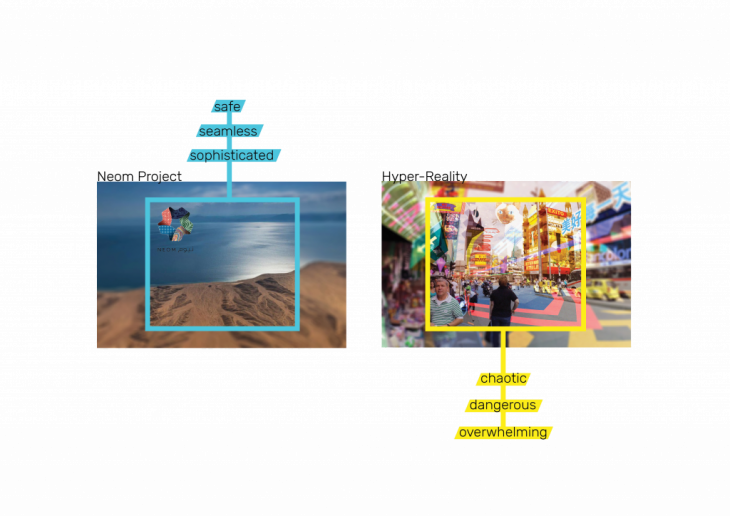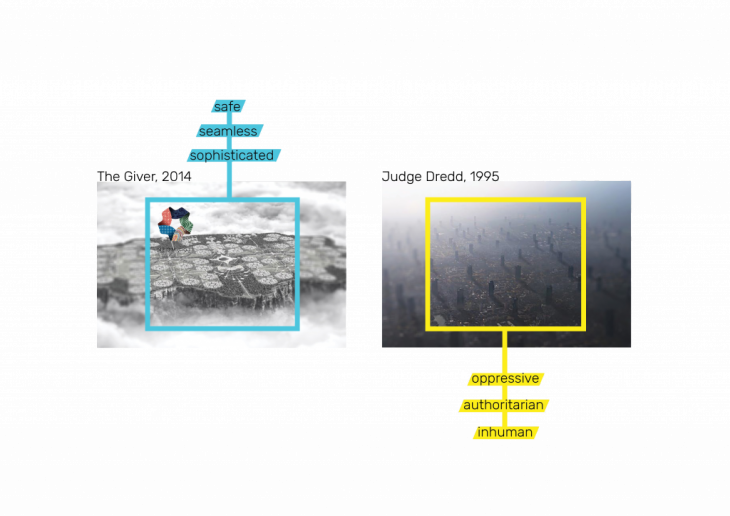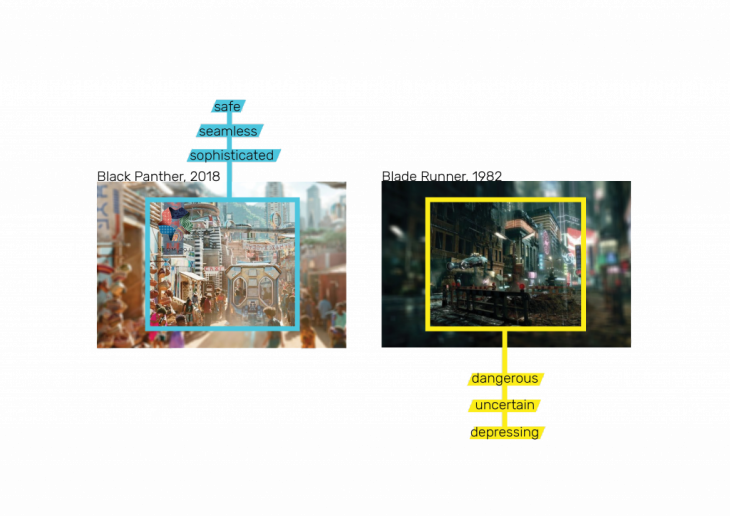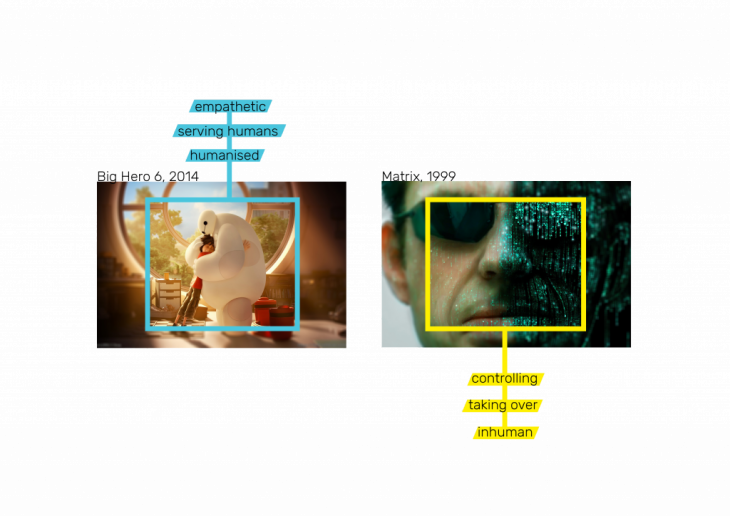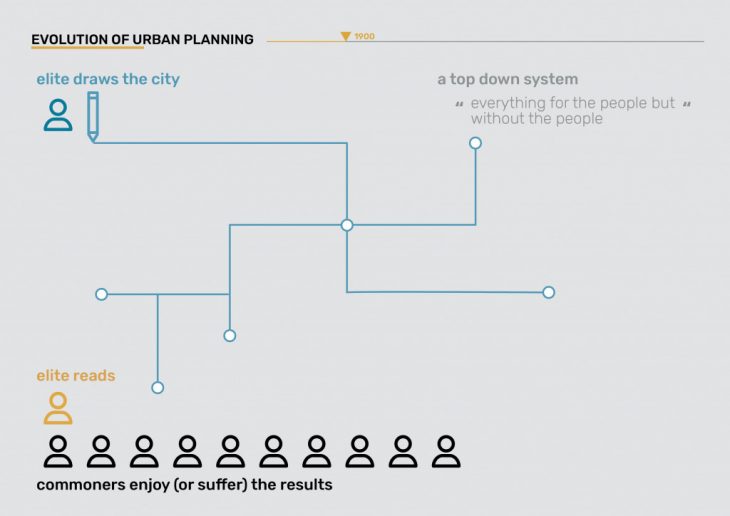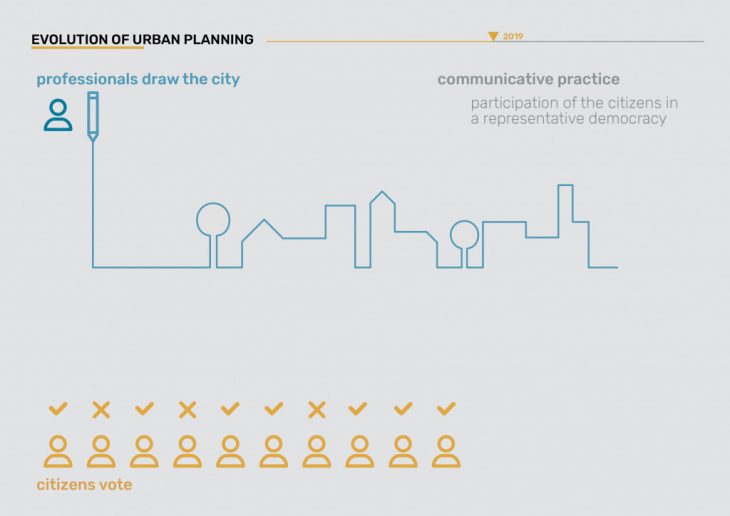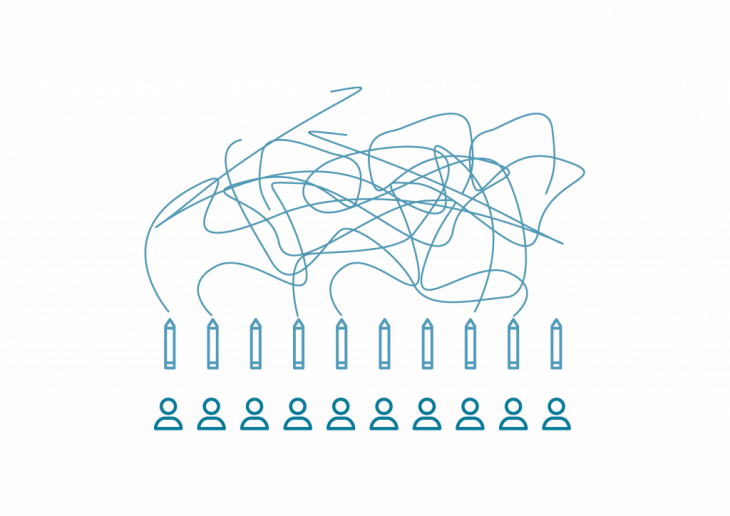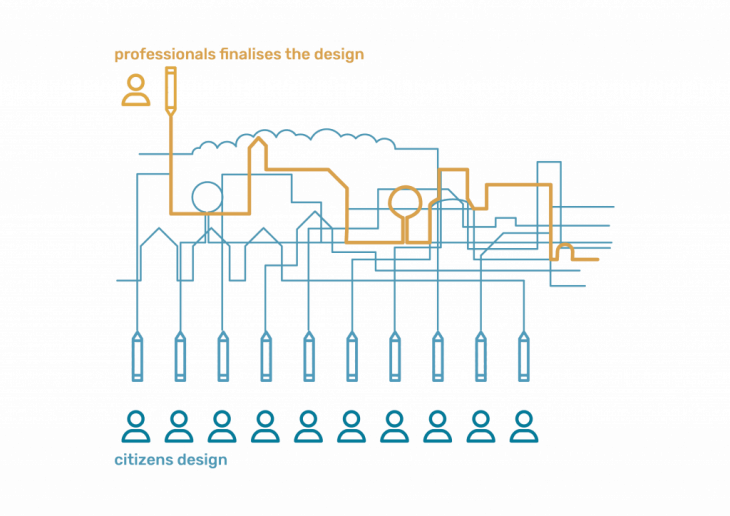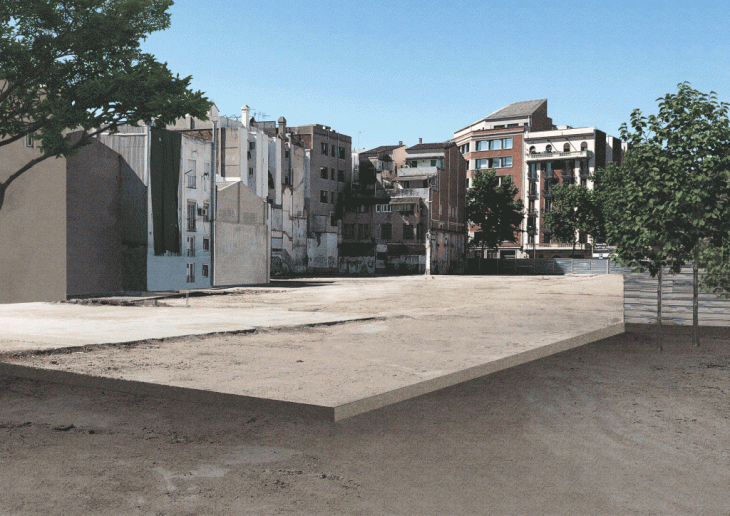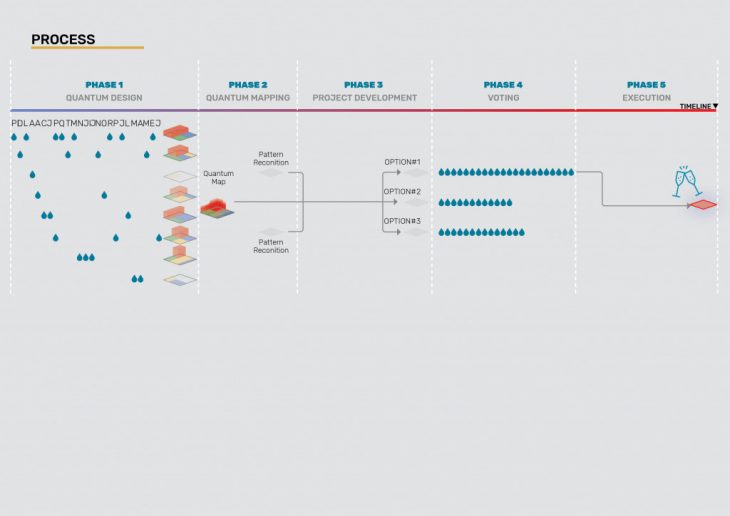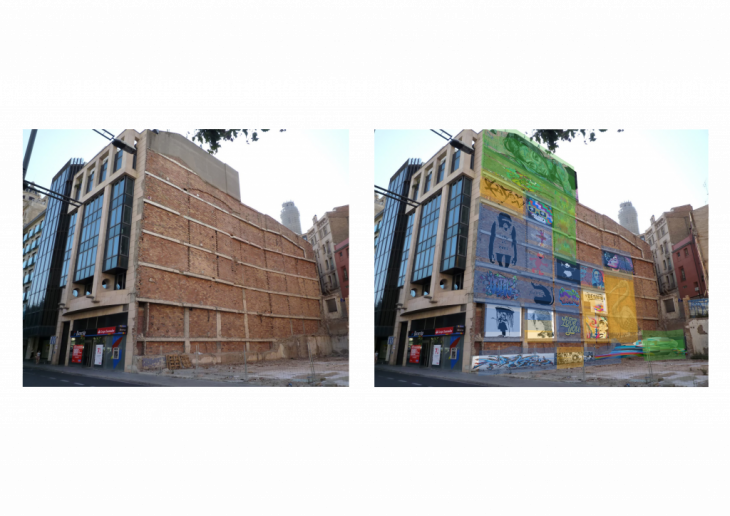What is the role of citizens in the future city?
In the beginning of the course, we were introduced to two different videos : Neom and Hyper-Reality.
Neom is aimed at depicting a utopian future that is safe, seamless and sophisticated.
Hper-Reality is supposed to warn us about the dystopian future which is overwhelming, dangerous and chaotic.
However, in both cases, we found opposite characteristics. The first one can be opaque, authoritarian and inhuman. The second one can be diverse, interactive and allow for more participation. In either way, both left us with restlessness and unease.
We decided to look at the world of films because films showcase the highest hopes and the darkest fears for the future. When we look at cinema, you see a lot of films depicting top down cities in both utopian and dystopian way. Sometimes they are depicted as safe, seamless and sophisticated cities, but sometimes cinema tries to warn us about the danger of cities becoming oppressive, authoritarian and inhuman.
In other cases, we see bottom up cities in cinema. We see utopian cases where cities are safe, seamless and sophisticated, while others are dangerous, uncertain or depressing.
When it comes to technology, sometimes cinemas see the future of technology as empathetic, serving humans and humanised. In others, like in Matrix, it can be controlling, taking over human kind and inhuman.
Evolution of urban planning
With these elements in mind, we then decided to explore the evolution of urban planning in history.
When technology and democracy was little, the few elites had the “city brush” and drew the city for other elites to read and judge those design. It was a top down system where everything was done for the people, but without the people, so the commoners either enjoyed or suffered the results. The City of Tomorrow by Le Corbusier, 1929, is the example where you can see it is very top down, very controlled and seems very organised but people do not have a say.
Nowadays, we are at a point where some cities have understood we have the tools to listen to the citizens. The city is still planned by a few, but some are engaging the citizen in listening, judging, and voting. That has created a new generation of planners that have started using their “city brushes” for everyone to read. Master plans are more didactic and understandable, and cities try to sit with their citizens to get feedback.
Mara Ballestrini said, “When we extend right, society progresses”. We believe that we have the tools to extend these rights.
“Quantum city” aims at giving brushes to all citizens.
We could easily jump into thinking this is what will happen if we give pencils to everybody.
Would this happen? But this happens in scenarios where citizens are to play a passive role in a public space. They hack it as it is not theirs.
However, when we give people the power to design, we are empowering them. For example “Lego City” – a collaborative project where tools where given to citizens to build. And like what Spiderman’s uncle Ben said, we believe that “with great power comes great responsibility”. With that, and the feeling of ownership, active citizens are capable of great things.
Welcome to QUANTUM PLANNING.
QP will use augmented reality to allow citizens to design collaboratively.
So how does it work? Let’s imagine different scenarios.
1. Polina
Polina is an architect from Russia who is currently studying at IaaC in Poblenou. As she was walking to school, she saw an empty plot with an open source design project. She puts her glasses with augmented reality. She has two options. The brush and paint. She selects the brush option. First, she decides where to place the community center. This is a requirement from the city council. Then she decides where to place the green spaces. Polina loves green spaces. Then she decides where to place the rest area with benches. And finally places the sports facilities. She’s happy with her drawing and continues her walk to school.
2. David
5 minutes later, David passes by the same plot. As an early adopter of technology, he has contact lenses that allow him to see augmented reality. David doesn’t like Polina’s design. So he deletes it. He starts drawing with the brush. David starts with the sports facility. He creates enough space for his favorite sports, tennis. Then the community center. He doesn’t think community center is that important, but it’s a requirement, so he reluctantly puts it at the corner.Then the resting space. Oops, no space left for green, but that’s okay. David is done with his design.
3. Luna
20 min later, Luna arrives at the plot. She’s already late for her group work, but she stops anyways. She uses her iPhone to see the plot. As she is not an architect, she chooses the paint icon and sees David’s design. She likes Polina’s design more. She pours the paint over the design adding more opacity.
For the next three weeks, many people including residents, commuters, tourists, and architects passed by the plot and contributed to the design. Those who are physically present at the plot have the right to contribute to the design. Those who use the plot more are given more weight.
Quantum process
Phase 1- the design will be captured and stored by the system. Through a set amount of time, each visitor’s contribution will be recorded, with new designs appearing and levels of transparency evolving. Once the deadline is reached, phase 2 will come into play.
Phase 2- the system will use all this data to create on the one hand what we call a quantum map. This is a map where all the designs are overlaid. This will allow some patterns to arise. In addition to Quantum Map, Quantum Graphics will be produced. Q Graphics will show tendencies and gaussian curves that will determine averages.These averages will constitute the “brief” or the “requirement” for architects and planners to design. We have called this bar the ‘professional allowance’, where professionals involved in the final design have some margin around the average within which the design must be.
Phase 3– such designers will develop and finally present different options following the potential different patterns recognised.
Phase 4 – will have again the citizens in the centre. Visitors to the site will be shown the designs via augmented reality and will be able to vote their favorite.
Phase 5- after a set amount of time, the winning option will be developed until completion.
In this lower graph we have displayed a simplified chart showing the stakeholders involved in each phase.
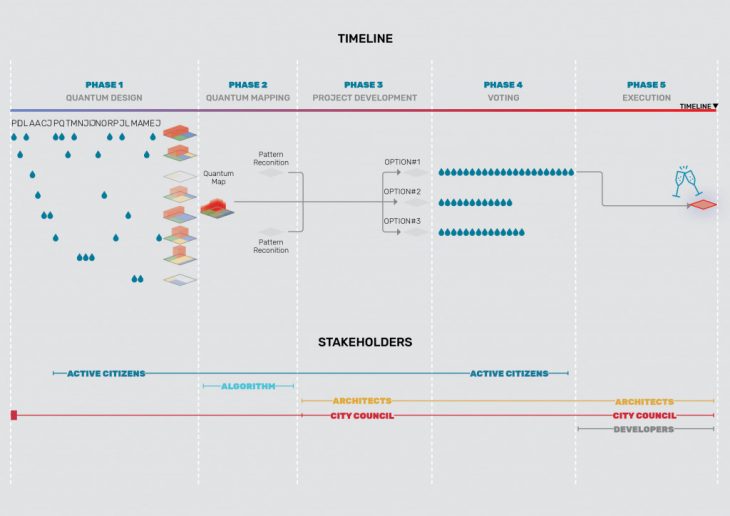 Alternative application of QUANTUM CITY
Alternative application of QUANTUM CITY
In the first example, the city council of Sant Adrià has decided to allow citizens to decide what to do with the long-abandoned factory next to the beach, which is a controversial sit
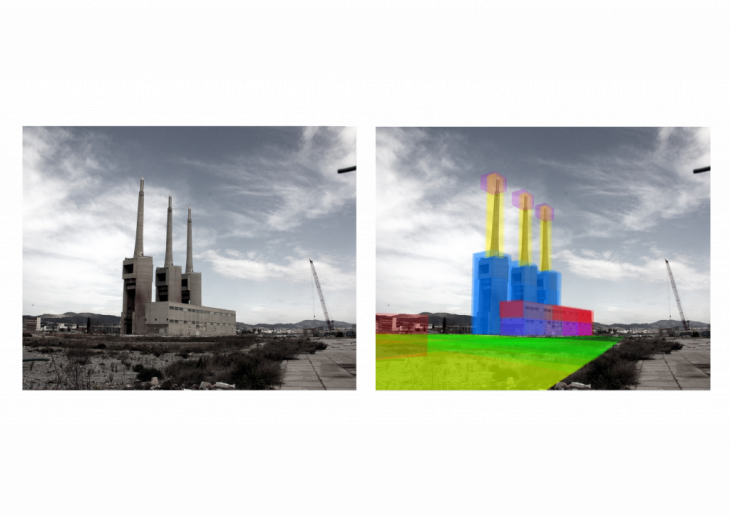
Citizens have been proposing different options. A museum plus commercial activity, leisure venues (like a club) surrounded by sports facilities, or just green spaces around the factory. Some people have voted for turning the chimneys into art or even places for bungee jumping! The city will zonify the activities according to this resulting quantum map.
In the second example, it is the neighbours who have organized themselves and set up the rules on the system for the beautification of this party wall in Eixample. Professional or amateur artists have claimed different bits of the wall to place their art, in a limited amount of time. Professional or amateur artists have claimed different bits of the wall to place their art, in a limited time of art. They have then presented the proposals to the city council, that has agreed to it, and they have proceeded to execute it.
Conclusion
The role of the citizens is to actively participate in civic life including urban planning. We believe that the balance between centralized and decentralized planning is important, while not underestimating the ability for citizens to self-organize. While technology has the potential to facilitate citizens to become active participants or passive consumers, or even take over humanity, we have the ability to design systems in a way that humanizes technologies.
A humanized technology is that which empowers active and participative citizens, allowing every voice to be heard and ensuring a diverse city. And it is not necessarily a utopia, this could be applied today.
Quantum City is a project of The Role of the Citizens in the City of IaaC, Institute for Advanced Architecture of Catalonia
developed at Master in City & Technology in (2018/2019) by:
Students: Polina Skorina, David Casanovas, Luna Nagatomo
Faculty: Kathrin DiPaola, Julius Streifeneder, Sophie Stigliano
